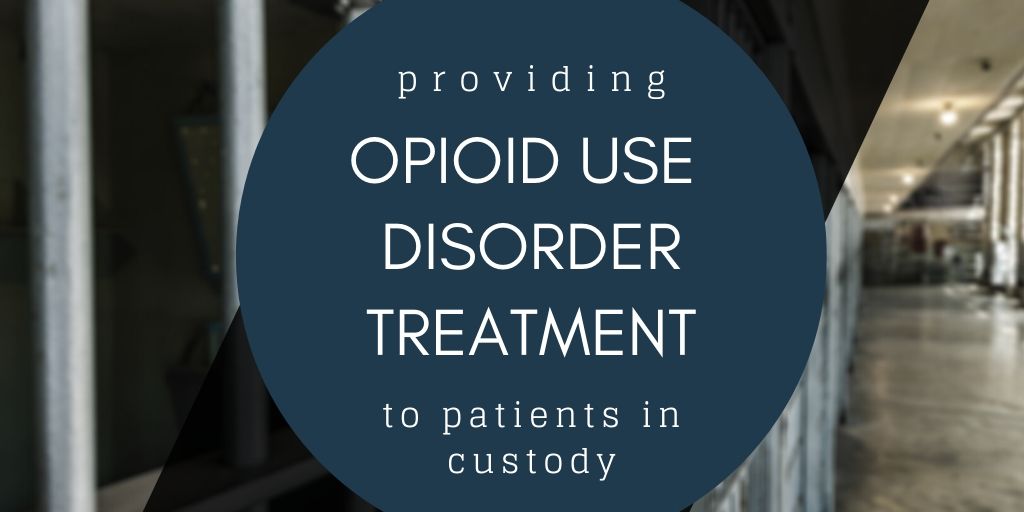“Effective treatment for opioid use disorders reduces mortality, recidivism, and the cost of health care, and it’s the right thing to do for patients,” says Rebecca Trotzky-Sirr, M.D. “It’s such a clear answer to so many questions in the criminal justice system.” Dr. Trotzky-Sirr wears many hats. She is an assistant professor in the departments of emergency and family medicine at the University of Southern California, Los Angeles. She is also director of urgent care at Los Angeles County + University of Southern California (LAC + USC) Medical Center and director of jail health services at LAC + USC. She is also regional director of the California Bridge Program, which is designed to increase access to substance use disorder treatment in emergency departments and hospitals.
Dr. Trotzky-Sirr is coauthor of a best practices fact sheet called “Care for Patients with Opioid Use Disorder Who Are in Custody.” The fact sheet notes that providing medication-assisted treatment in correctional settings decreases overdose mortality by more than 60 percent. It lists a set of 12 steps to ensure high-quality, continuous care for people with opioid use disorder in custody. But for Dr. Trotzky-Sirr, the guidance in the fact sheet can be boiled down to this: “If you see opioid use disorder or opioid withdrawal, then you should treat opioid use disorder or opioid withdrawal, ideally with buprenorphine in most care settings. That’s the most effective, safe, and available intervention.” For those patients who don’t want medication, the treatment of choice is talk-based therapies and social support services.
Both health care and correctional personnel need to overcome antiquated mental models of what substance use disorder is and how it is treated, Dr. Trotzky-Sirr believes. As a resident, she was taught to treat substance use disorder as an acute condition, much as you would treat a strep throat. She believed that patients went for a short stay in residential treatment and were cured. “But that isn’t reflected in reality,” Dr. Trotzky-Sirr explains. “That’s just a cultural narrative that’s very popular.”
Instead, she notes, substance use disorder is a chronic brain condition with effective medical interventions, such as diabetes or hypertension. “Once I realigned my mental model, I had more clarity about how to deliver good patient encounters and effective treatments,” she says.
In addition, Dr. Trotzky-Sirr concedes that many health care practitioners think everything has to be perfect before initiating treatment for a substance use disorder, including having a social worker and a community health worker lined up, and a patient who says they are ready to enter long-term recovery. “Once we recognized that was our internal bias, we were able to align our mental models with actual science, which indicates to start treatment no matter what, no matter when, even if your patient is not quite ready,” she remarks.
While it is preferable to continue buprenorphine treatment without interruption, the fact sheet explains, exposure to treatment with buprenorphine “provides a period of symptom relief, immediate overdose protection, and familiarization with the positive effects of the medication. The benefits occur even with patients who are unable to continue treatment while incarcerated.” Unlike a dose of antibiotics for an infection, buprenorphine can be stopped and restarted without promoting treatment resistance, Dr. Trotzky-Sirr explains.
For their part, Dr. Trotzky-Sirr believes, corrections officials need to address the myths and biases about buprenorphine treatment. “Their mental model is that it’s getting people high, that it’s not real recovery, that it’s dangerous,” she says. Health care practitioners can help address these myths by sharing success stories of people who have been treated successfully with buprenorphine. “Sometimes these stories help our corrections team members see the value of treatment because ultimately they want the same things as health care team members want – safe, happy, functional communities for everyone,” Dr. Trotzky-Sirr notes.
Dr. Trotzky-Sirr acknowledges the inherent barriers in treating people for opioid use disorders in custody settings. These include the fact that jail stays may be of indeterminant length. Still, she says, the message remains the same. “Instead of waiting for future perfect conditions, we look at it day by day. If the patient is with us now, we provide treatment,” Dr. Trotzky-Sirr says. “If we think they might be leaving tomorrow, we’ll address that tomorrow.”


